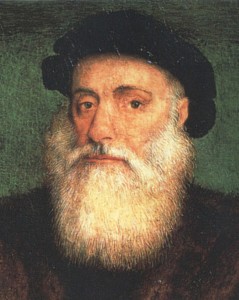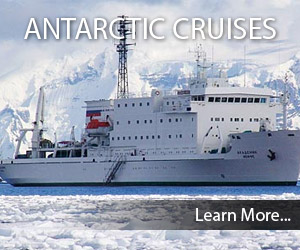02 The Age of Exploration
When the Christian city of Constantinople (now Istanbul) was occupied by the Turks at the end of the fourteenth century, fleeing scholars brought Ptolemy’s works back to Italy. The Geography was translated into Latin in 1405 and hundreds of copies were printed by the end of the century. Europe started to look outwards. The Portuguese Prince Henry the Navigator (1394–1460) is regarded as the initiator of the great age of exploration; although he himself did not travel much, he was the patron of many voyages in Portuguese caravels that ventured far down the west coast of Africa. Henry wanted to reach India by sea for missionary and trade purposes, but the furthest his vessels sailed was to the coast of Sierra Leone. It was left to his compatriot Bartolomeu Diaz (c.1450–1500) to launch the age of Antarctic exploration.
Most early exploration of Antarctica was a process of whittling down the fabled Great South Land as empirical knowledge replaced conjecture. The Portuguese explorer Bartolomeu Diaz took the first significant step when he sailed down the west coast of Africa in 1487. At the time, it was still credible that Ptolemy was right and that Terra Incognita filled the bottom of the world with a coast across the temperate zone, so that the Atlantic and Indian oceans were in effect inland seas. It was a brave venture by Diaz, because other ancient predictions stated that humans could not survive the “torrid zone” at the equator. In January 1488 he was alongside the coast of what is now South Africa when storms drove him out to sea and he sailed south for a few days. When he turned east, he found no coast, and made landfall only by sailing north again. He had rounded the bottom of Africa. He realized that he had discovered a sea route to India, and that Africa, at least, was not joined to the Great South Land. When he returned there was talk of his leading a voyage to India, but it was another Portuguese explorer, Vasco da Gama (c.1469–1525), who sailed to India in 1497, thus proving that the Atlantic and Indian oceans were not landlocked. In March 1500 the Portuguese navigator Pedro Cabral led a fleet of 13 vessels to India, but to avoid the becalming waters of the Gulf of Guinea they sailed southwest far enough to see (and claim) the land now known as Brazil.
Next came Amerigo Vespucci, born in Florence in 1454 and employed by Spain, then by Portugal, and finally by Spain again. In 1501 he led a Portuguese expedition that reached Brazil in January 1502 and proceeded south to the River Plate. There is some dispute over the authenticity of Vespucci’s papers, but it is likely that he sailed south along Argentina’s Patagonian coast. He concluded that he had discovered not a new route to Asia but a whole new world that was to become known as America—a name first used in 1507. Clearly the world was much larger than Ptolemy had calculated, and this was confirmed when, on 25 September 1513, the Spanish explorer Vasco Núñez de Balboa crossed the Isthmus of Panama and became the first European to see the vast Pacific Ocean.
author: David McGonigal
Thinking of travelling to Antarctica?
Visit our Antarctic travel guide.
Early Explorers
- 01 First speculations
- 02 The Age of Exploration
- 03 Ferdinand Magellan
- 04 Sir Francis Drake
- 05a James Cook (1768-1771)
- 05b James Cook (1772-75)
- 05c James Cook The Final Voyage
- 06 Thaddeus von Bellingshausen (1819-21)
- 07 Who first saw Antarctica?
- 08 Who first set foot on Antarctica?
- 09 James Weddell (1822-24)
- 10 Sealers and whalers
- 10a Biscoe and the Enderby Brothers
- 11 Jules Sébastien César Dumont d’Urville (1837-40)
- 12 Charles Wilkes (1838-42)
- 13 James Clark Ross (1839-43)
- 14 The Challenger Expedition (1872-76)
- 15 Adrien de Gerlache (1897-1899)
- 15 Henryk Johan Bull (1894-95)
- 16 Carsten Borchgrevink (1898-1900)





 Email Newsletter
Email Newsletter